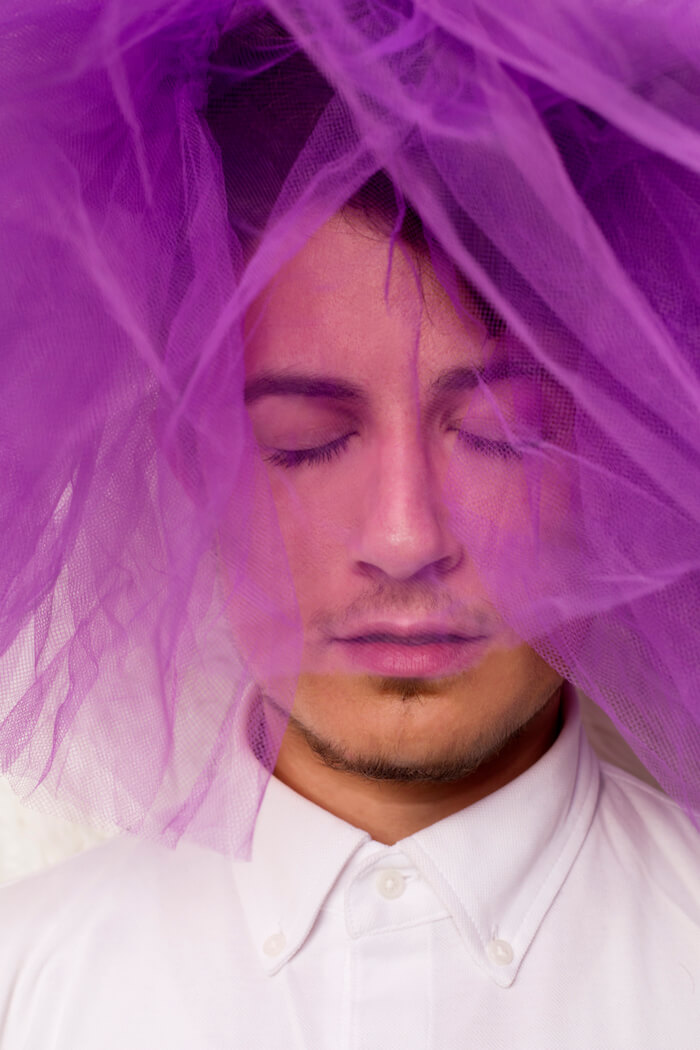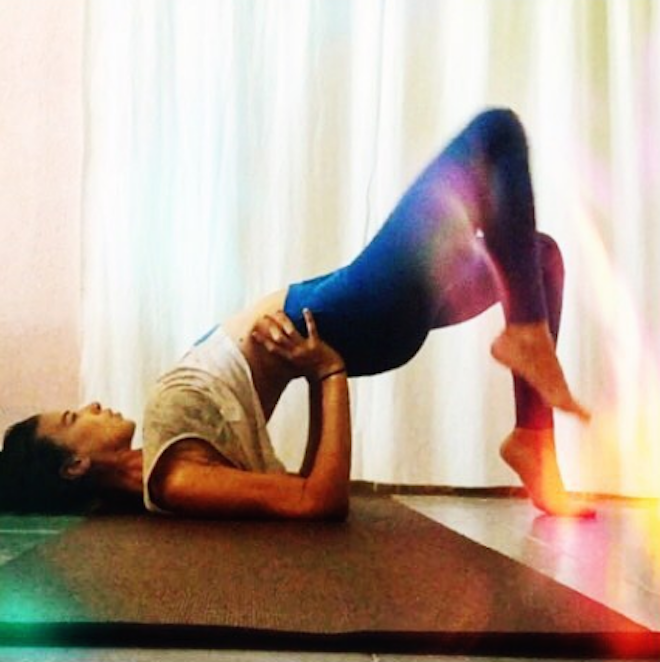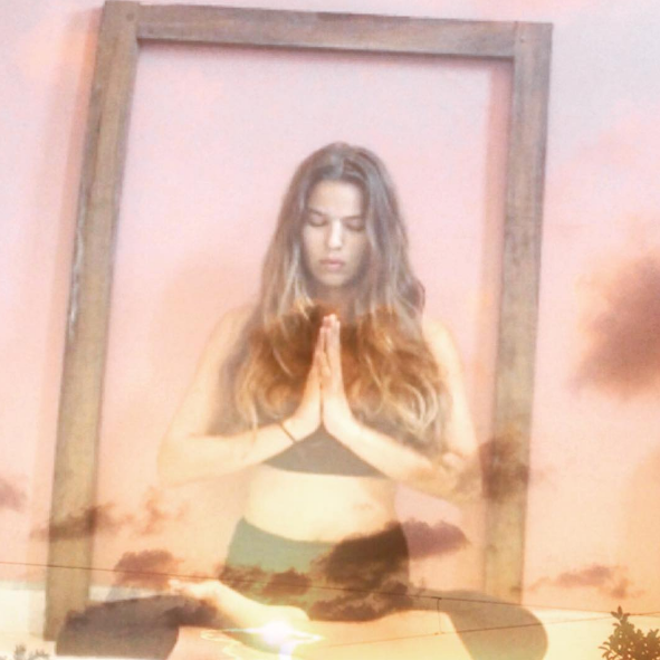In the wake of Jupiter’s transit through Scorpio, sexual trauma has been brought to light over and over again. In his latest “Queer Hero” column, survivor and healer Danny Brave shares 7 ways to process the deep pain and move from #Metoo to I AM … Photos by Tal Shpantzer
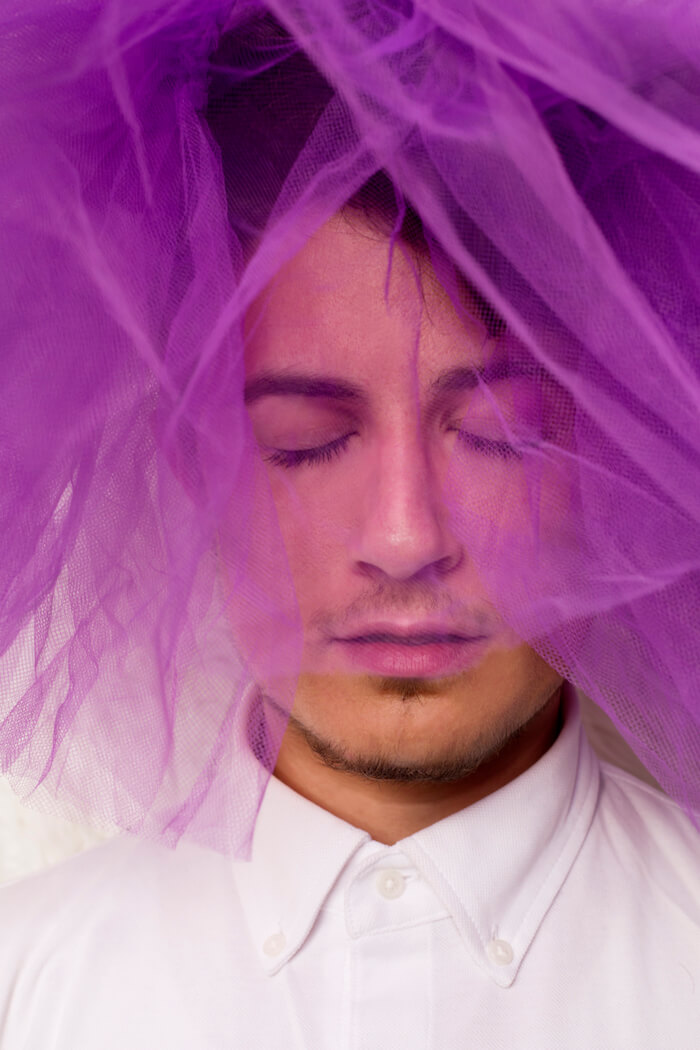
The #MeToo movement exploded onto social media on October 15th 2017, only four days after Scorpio’s transit into Jupiter (the sign of intimacy, sex, secrets, and power). The hashtag was created by Tarana Burke, the black woman whose brilliant activism started the movement all the way back in 2006. Her decade of advocacy reached mainstream awareness when Alyssa Milano tweeted #metoo in response to accusations of sexual assault & misconduct in Hollywood.
Whether or not we wanted to deal with it, molestation, rape, and sexual trauma was being brought to light over and over and over again. Some of us felt ready for this darkness to reveal itself so dramatically and intensely, while others of us felt ill-prepared for all of the undigested emotions and traumas that these women were bringing to the forefront of our consciousness.
With Jupiter still retrograding through Scorpio, and April marking Sexual Assault Awareness Month (S.A.A.M.), I have been reflecting on all that has transpired since the initiation of this powerful planetary movement …
>>>
Widening the sexual trauma narrative
The stories of who is sexually assaulting who are as varied as the number of people on earth. I know white cis gender men who have been assaulted by cis white women, and I have met men who were molested by their mothers as boys. Sexual violation has been perpetrated by gay men to other gay men, by queer POC to other queer POC, by fathers to girls who come out later in life as non-binary or trans men, by white people to black people and vice versa.
The list of race, gender, sexuality, body type, and age variable narratives continues, as is reflected by the statistics:
– 47% of transgender people are sexually assaulted at some point in their lifetime
– Of trans people of color: American Indian (65%), multiracial (59%), Middle Eastern (58%), and Black (53%) have experienced sexual assault
– American Indians are twice as likely to experience rape/sexual assault compared to all races
– 1 in 3 women experience sexual assault
– 1 in 10 men experience sexual assault
– 44% of lesbians experience rape
– 61% bisexual women experience rape
– 26% of gay men experience rape
– 37% of bisexual men experience rape
*Statistics are for the United States only, from the U.S. Trans Survey in 2015, RAINN (Rape, Abuse & Incest National Network), and the National Intimate Partner & Sexual Violence Survey).
And the effects are staggering. From persistent and debilitating anxiety and/or depression, to the shutdown of one’s sexuality, and a sense of complete worthlessness and suicidal thinking, the wake of this abuse’s devastation goes on and on.
For the sake of everyone’s healing, we must not confine this widespread epidemic to old stereotypes and the rigidity of the gender binary.
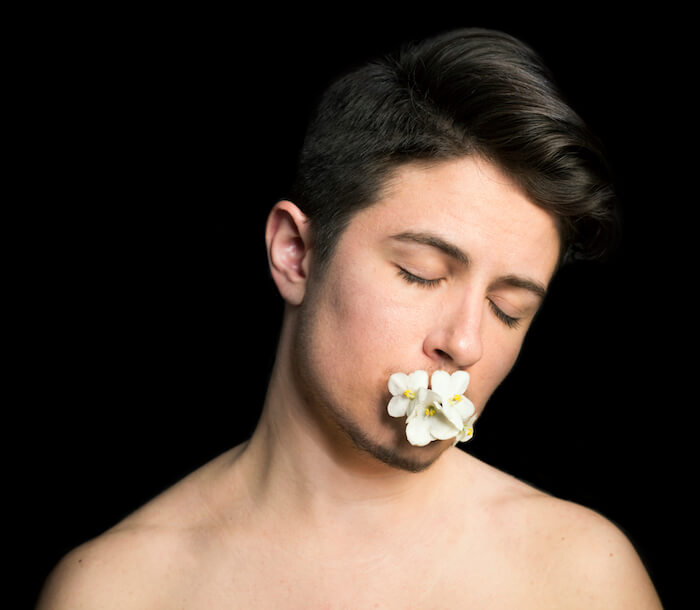
7 ways to heal your sexual trauma …
To provide some solutions, below is a love letter—a list of tools, rituals and advice that have helped me and my clients reclaim our lives, sexuality, and bodies in the aftermath of sexual trauma …
>>>
1//Make art. Whatever your creative medium, express it! You don’t have to show what you create to anyone at all (unless you want to!), you don’t have to be good at it, and you don’t have to spend much money (writing, for example, costs about $3 for a cheap notebook and pen). The purpose is just to get the energy moving.
Creativity is governed by the sacral chakra, located in the pelvis, genitals, and lower back, and connected to sexual energy. When you are being creative, you are helping to unearth, clear, uplift, and release some of the stagnant or painful energy that got planted there during moments of abuse.
If you are struggling with depression in particular, making art makes you active again. It puts the ball back in your court and helps you remember that life can be beautiful, and that it is okay to feel. Become the transmuter of your own pain through your creativity and I promise you catharsis will be there, and that this will eventually (if not immediately) lead to feeling better.
*Recommended: The Artist’s Way by Julia Cameron
>>>
2//Tell someone who makes you feel safe and who you know will believe you. One of my mentors taught me that the lips of the labia and the lips of the mouth have the same nerve endings—they are connected. What this means is that sexual trauma silences us; it makes us somehow incapable of voicing our truth, standing up for ourselves, and asking for our needs (emotional or otherwise) to be met.
Telling our deep dark truths to someone we can trust can be one of the most healing experiences. Here’s a loose structure to get you started:
1 – Contact the person you are going to meet and ask them, in your own words, if they will meet with you in person so that you can vent and get something really difficult off your chest.
2 – Tell them exactly what you need from them afterwards. Is it a quick hug? To be held for a while? To say “I’m sorry that happened to you,” to say “thank you for telling me your story”? It can feel weird to make such a clear and specific requests, but people aren’t mind-readers, and our abuse stories are so intense that we often require a very specific type of support to feel just that: supported.
3 – Tell them your story and provide as many details as possible. I am talking about the date and time, who did it, the location of the abuse on your body, how you felt—the whole thing. If it makes it easier, you can write this out all out in advance. Notice the resistance to doing this and try to push through and speak your truth anyway.
4 – Set up something really lovely to do for yourself afterwards—something that makes you feel comforted, brings you back to the present moment, or brings you joy. Do you love to go see movies? To plant a garden? To paint? To go for a joy drive and blast music? After unleashing your powerful truth, make sure you engage with this activity for as long as it takes to get you back to the present moment.
*Recommended: Vagina by Naomi Wolf
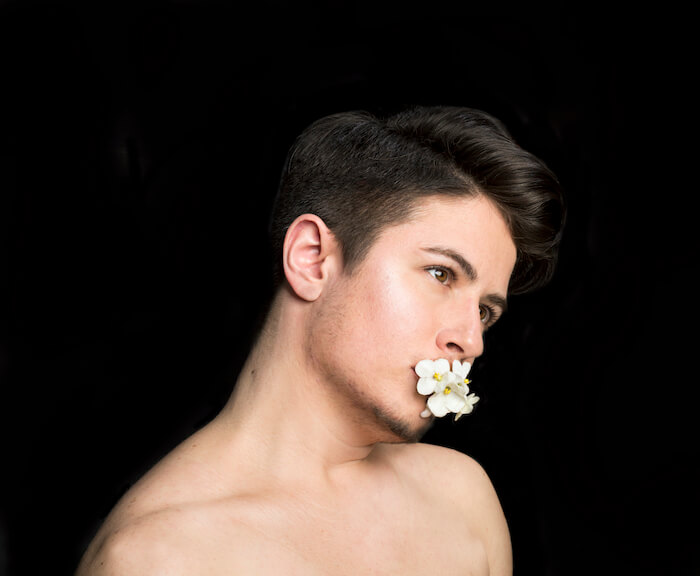
>>>
3//Realize that what happened to you is NOT your fault. Something that tends to get built into the experience of sexual abuse is that we, on some level, caused or created it.
The mind of a child is more straightforward than the mind of an adult, and it does not understand that bad things that happen are not caused by them. If the abuse is being perpetrated by an adult to a child, the child knows that the parent is the one feeding and clothing them and therefore will do any and all mental gymnastics to repress, imagine, or self-blame the abuse away by taking on and in all of the pain and blame.
If you were an adult when the abuse happened to you, it’s still easy to think: “If I hadn’t been drunk, if I had been wearing something different …” If we are spiritually-inclined, we might even torture ourselves with spirituality and the law of attraction, asking ourselves ridiculous things such as: “Why did I create this experience? Maybe I wasn’t thinking positively enough … I wonder why I attracted this abuse?”
Why do we try to make something as awful as this our fault? The truth is simple: it is easier to blame ourselves and engage in self-hatred then it is to deal with the fact that what happened was not in our control and not our fault whatsoever. Doing this also prevents us from having to deal with the emotional reality of holding someone else accountable for their actions.
Hating ourselves or trying to make ourselves responsible for something we clearly didn’t cause or do is an incredibly effective defense mechanism to either defend the memory of our parents because we want to maintain a relationship with them, and/or to avoid holding the perpetrator fully accountable for the painful emotions associated.
It is because of this that I cannot stress enough: what happened to you was not your fault. What happened to you was not your fault. What happened to you was not your fault. What happened to you was not your fault.
It wasn’t.
And coming to terms with this is an all-too-necessary step that needs to happen before forgiveness and letting go (after all, if we don’t hold someone accountable to begin with, then what is there even to forgive?)
*Recommended: Repressed Memories by Renee Fredrickson; Queering Sexual Violence by Jennifer Patterson; Stacyann Chin’s powerful speech: Not my fault; Diana Oh’s incredible feminist art/activist installation My Lingerie Play (Especially Installation 3/10: “Even If You Found Me Like This”).
>>>
4//Perform a releasing ritual. Ritual is a powerful way that we can find closure and healing for experiences and situations that seem impossible to ever gain closure from. By doing something physical, ritual provides a concrete moment that serves as a bridge for us to walk over and into the next phase of our lives.
Here are a couple of suggestions for releasing rituals that I have found to be incredibly powerful in healing my own sexual trauma:
1 – Write a letterto the person who did it (and don’t send it). I know, it’s intense. The thing is … if you have not done something like this already, it is likely that the thoughts and feelings you would communicate directly to this person are rolling around in your head and your body, anyway, and without an outlet.
What we are looking for here is catharsis and closure. It is not meant to be sent to the person, and that being said, it does not have to be respectful or kind in any way. Get it aaaaalllll out. And then, safely destroy it! Rip it up, or light it on fire. Afterwards, make sure you set yourself up with some really lovely after-care: a relaxing walk alone or with a friend, a gentle movie that makes you feel comforted, etc.
2 – Go somewhere in nature. Preferably a body of water (and especially the ocean). Take a stroll to find either a seashell or rock, and place it in your hand. With the object in your hand, charge it up with all of the feelings and experiences of the abuse, and all of the things that have happened as a result of it.
Take a moment to really feel all of that energy and pain moving through and out of your body and into the shell or rock. Then, THROW IT IN THE OCEAN! Boom: it’s done, it’s over. Give yourself some time to sit and have a leisurely walk or maybe even journal after you release this- again, with everything involving your recovery, taking the time for gentle after-care is important.
*Recommended: She Let Go by Rev. Safire Rose (adjust pronouns accordingly, brave ones!)
>>>
5//Adjust your sexual expression accordingly. While it may not be the case for everyone, it has been my own, and many of my clients’ experiences that sexual abuse tends to create a polarity of subsequent sexual expression: either way too much, or way too little (basically non-existent).
This is not an invitation to judge yourself, rather to become self aware of your sexuality and sexual patterns from a place of unconditional love. Remember, the extremity is not your fault (re-visit bullet point #3 if you’re beating yourself up).
*For my way too much-ers: Take a vow of celibacy for 3 months (it’s ok: you can still masturbate). During this time, when you do masturbate, take a few breaths and ask to connect to God/Spirit/the Universe (whichever term you prefer) through your sexual energy (and prepare to be blown away!!)
Make a list of 10 other ways to feel loved, outside of engaging in sexual activity with another person, and commit to exploring one of them each week during your temporary celibacy.
*For my non-existent/way too little-ers: Make it a non-negotiable commitment to exploring your sexual nature and opening up to sexual experiences on a bi-weekly basis, working up to sharing yourself with a consenting partner, if it feels right.
Also, dance. Yes, DANCE. Take dance classes that bring the energy down into the lower chakras: African dance, hip hop, pole dancing, etc. Get out of your comfort zone!
*Recommended: Why Mother Nature is the Ultimate Goddess of Love by Tirzah Shiya
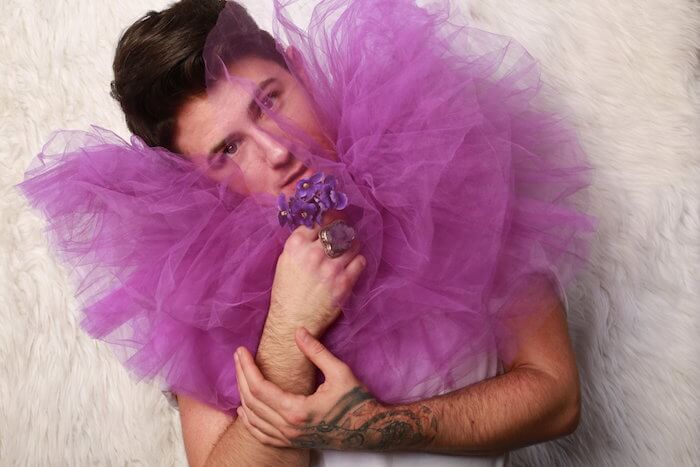
>>>
6//Invest in healing that is holistic and takes your body into account. We know that the conscious mind governs only 10-20% of the totality of our consciousness. Traditional psychotherapy is typically working with the 10-20% of the conscious mind to try to get to the 80-90% that’s less conscious. Unsurprisingly, I prefer methods that go straight to the 80-90%: reiki, shamanic healing, and meditation. You might also try sound healing, hypnotherapy, tapping, somatic experience, or any other mind-body practice you feel drawn to.
The site that is typically inflicted with a sexual trauma wound for women, trans men, and those assigned-female-at-birth is the vagina, or “yoni.” Mystics and shamans know this place to be the gateway to the universe, and the key to creation of life itself—not only human life as in childbirth, but also the creation of all things, such as personal dreams and manifestations.
In my personal shamanic healing practice, I use a tool called a shamanic extraction, which uses the intelligence of crystals to safely extract pain, fear, and any other energy intrusions that were inflicted on the individual’s yoni during the time of abuse out, followed by the channeling of reiki healing energy into the area. This allows the individual to have agency over their yoni, one of the deepest and most powerful tools for us to create our lives from this place- a place of health, clarity, and integrity.
Another incredibly effective tool I use is shamanic cord cutting, which is a powerful ritual in which we take the cord of energy that is usually still subconsciously or unconsciously connecting the client to their abuser via a vibration of pain, and we release it, and follow up by channeling reiki or healing energy into the area for deep healing.
*Recommended: My one-on-one healing work, Moon Mysteries by Nao Sims & Nikiah Seeds & Boundaries by Henry Cloud & John Townsend
>>>
7//Connect with community. The patriarchy thrives off of separation. Pain and darkness prevail when we are in isolation. This is not normal or natural, and we need matriarchy now—a matriarchy that is for all genders, races, body types, and ages.
It is imperative that in your healing journey, you find some sort of community to join where you feel safe enough to be seen. It can be a shamanic community, a monthly women’s circle, AA, a hiking club—there are tons of things to do and join in this world, both in-person and online.
Don’t do this alone. You can’t do it alone. Other people need you and you need them, and that’s okay. My hope is that we start to live in a world where our emotional needs are no longer judged as being “needy.” We all need each other, and we all heal each other. So let’s do that.
*Recommended: If you’re located in NYC, sign up for my upcoming 6-week transformational community group HERE; also check out the Red Tent Movement, Moon Club, and Meetup.com

